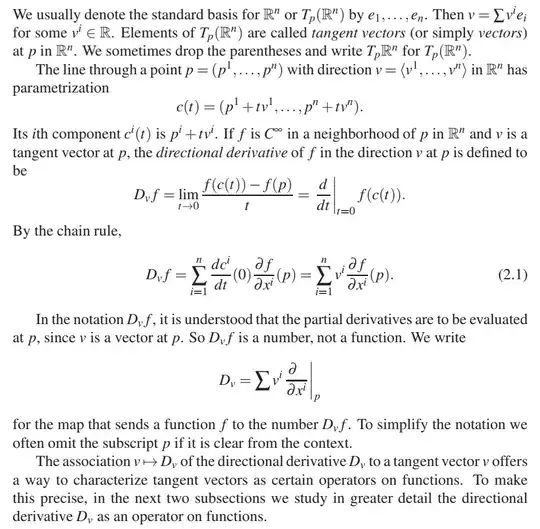Here is the definition:
My calculus book defines directional derivatives for unit tangent vectors. According to Wikipedia, there is a convention that uses both the direction and magnitude. However, the definition says "in the direction $v$ at p". Does the magnitude somehow cancel out to have that $D_vf = D_uf$ for any tangent vectors $u$ and $v$ at the point $p \in \mathbb R^n$ that point in the same direction, or is magnitude really relevant here?
I think magnitude is relevant because I think $D_{[4,2]}f = 2D_{[2,1]}f$ and not $D_{[4,2]}f = D_{[2,1]}f$.
If magnitude is relevant, then should the definition instead be something like "with respect to the vector $v$ at p" ?
My book is An Introduction to Manifolds by Loring W. Tu.
